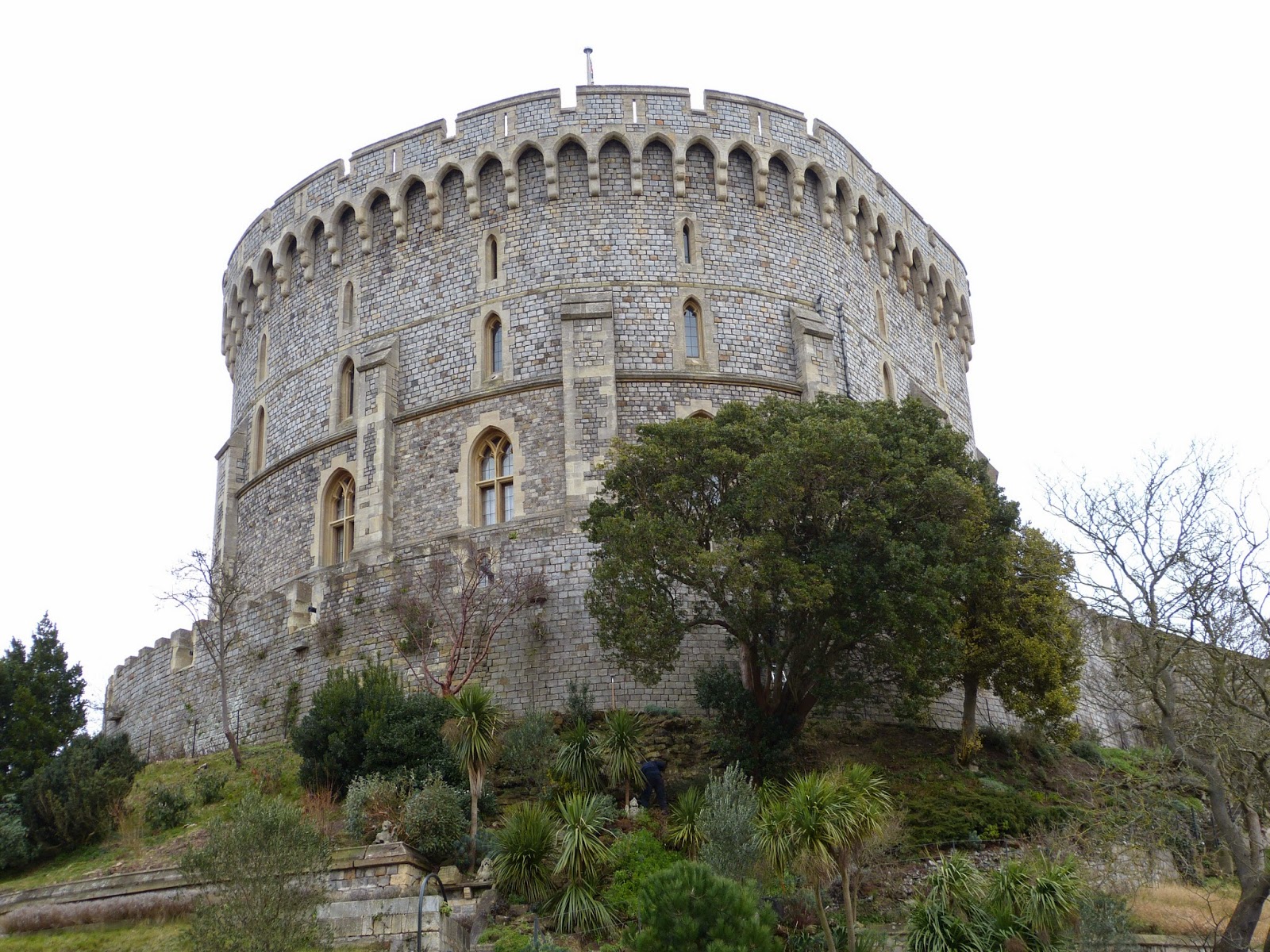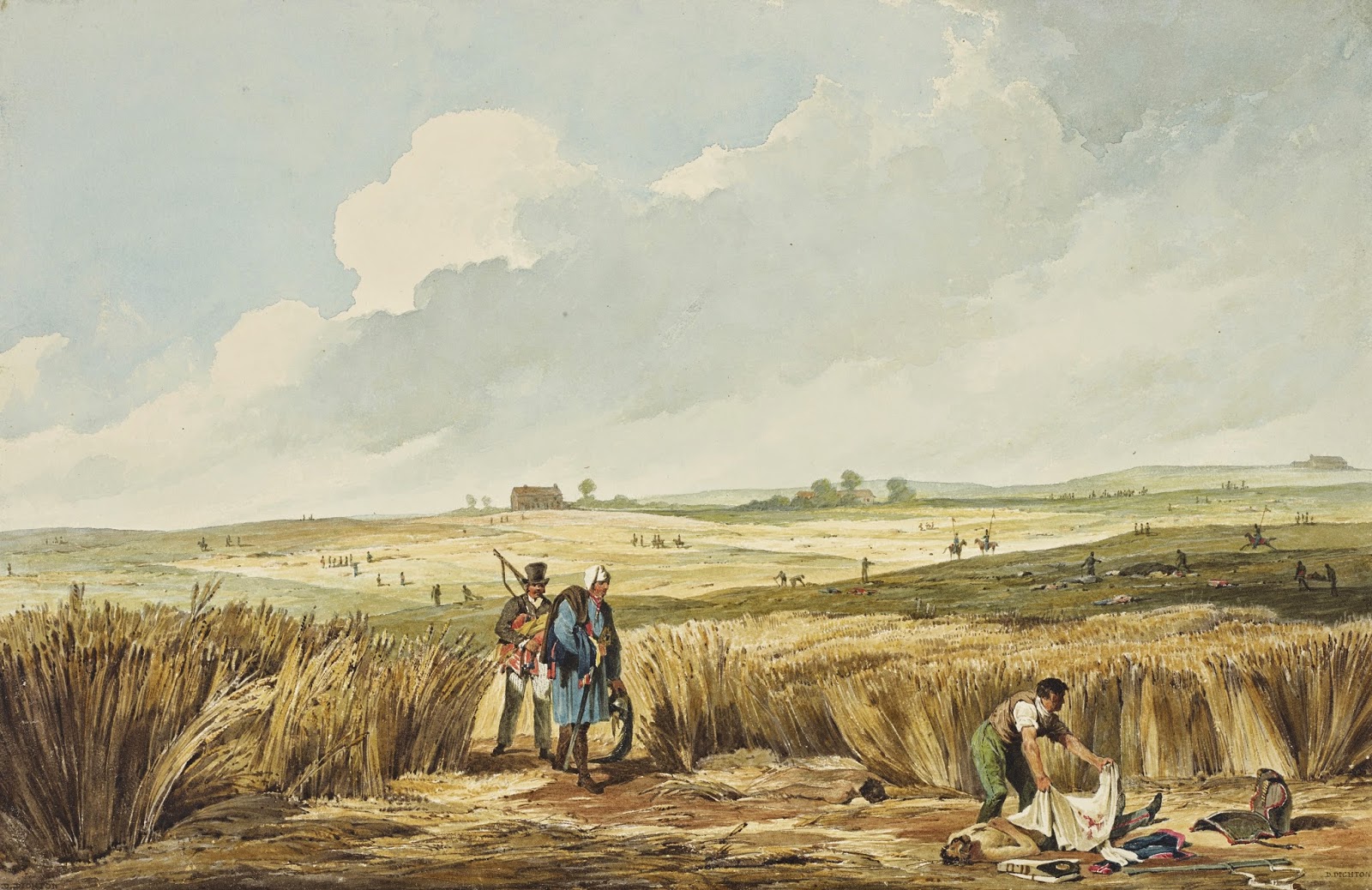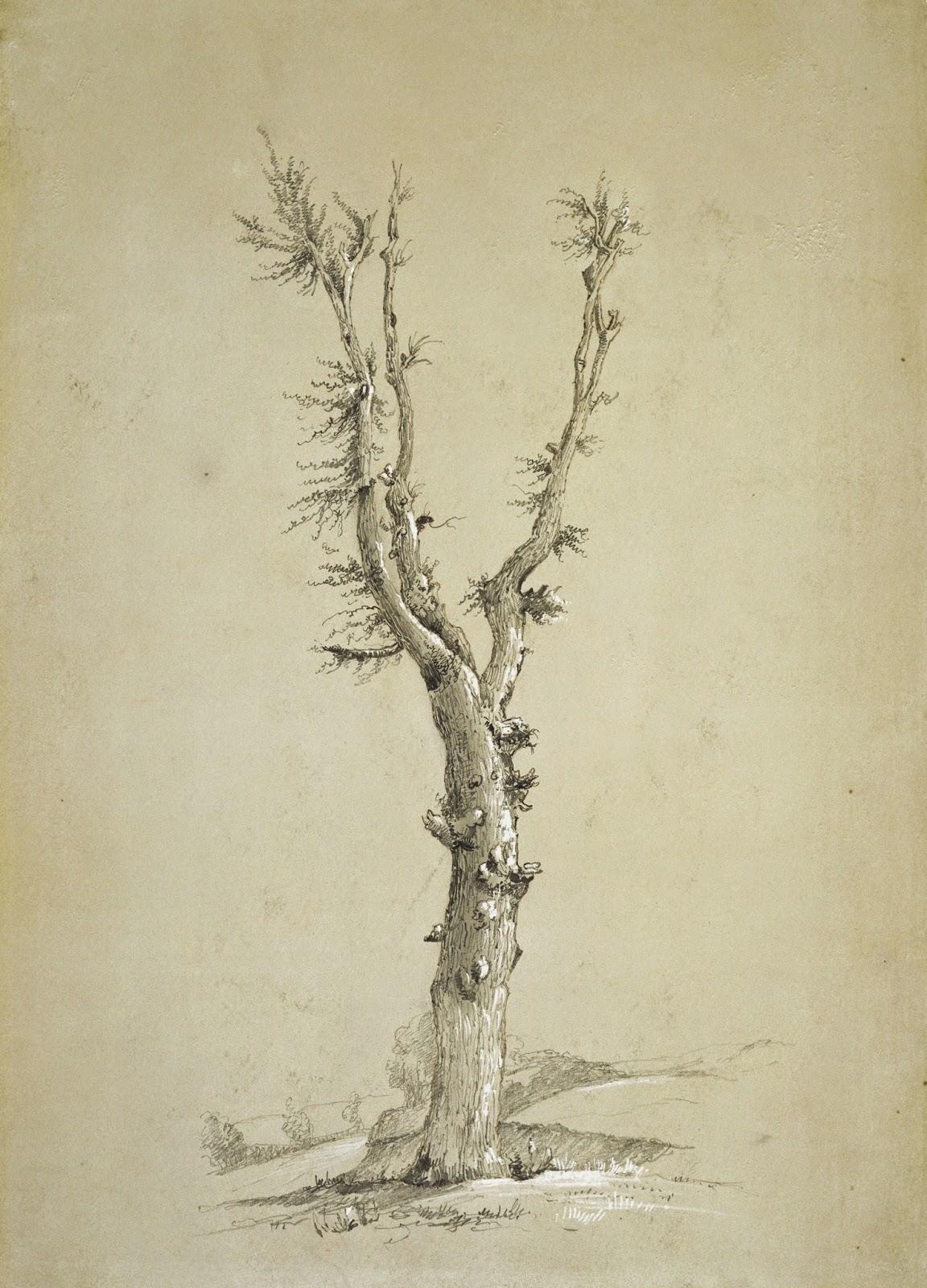 |
| Windsor Castle (2015) |
The Waterloo at Windsor 1815-2015 exhibition celebrated the 200th anniversary of the Battle of Waterloo which took place on 18 June 1815. This battle marked the defeat of Napoleon and ushered in an era of peace between Britain and France.
The main part of the exhibition is in the Drawings Gallery with other items spread throughout the State Apartments. There is a souvenir map and guide to the exhibition which is included free with the Windsor Castle guidebook or it can be bought separately for £2. The exhibition closed on 6 January 2016.
The main part of the exhibition is in the Drawings Gallery with other items spread throughout the State Apartments. There is a souvenir map and guide to the exhibition which is included free with the Windsor Castle guidebook or it can be bought separately for £2. The exhibition closed on 6 January 2016.
Read about the history of Windsor Castle in my Regency History guide.
 |
| Napoleon Bonaparte, after Nanine Vallain (1802) Royal Collection Trust © Her Majesty Queen Elizabeth II 2014 |
The Drawings Gallery is at the top of the stairs leading to the State Apartments. Don’t miss it! First time round, we walked straight past it into the State Apartments on the right and had to go back to find out where it was.
 |
| Entrance to State Apartments, Windsor Castle |
The Drawings Gallery contains a display of pictures and prints about Waterloo from the Royal Collection, most of which were collected by George IV who was fanatical about the Battle of Waterloo. These include contemporary satirical prints and drawings of the battlefield as well as pictures of the military leaders from both sides.
 | |
| Distant View of La Belle Alliance, Field of Waterloo (1815) by Denis Dighton Royal Collection Trust © Her Majesty Queen Elizabeth II 2014 |
 |
| Napoleon's letter of surrender sent to George, Prince Regent, 13 July 1815 Royal Archives © Her Majesty Queen Elizabeth II 2014 |
 |
| Napoleon Bonaparte, published by Rudolph Ackermann (1816) Royal Collection Trust © Her Majesty Queen Elizabeth II 2014 |
I was especially interested in a Rowlandson print of Bullock’s Museum from 1816. After the Battle of Waterloo, Napoleon’s carriage was captured by the allied army. The British government sold the carriage to William Bullock who put it on display in his museum in London in 1816. The print depicts a huge crowd of people climbing all over Napoleon’s carriage which proved to be a very popular exhibit. What I cannot figure out is why he was allowed to buy the carriage in the first place. Given George IV’s obsession with Waterloo, I thought he would have bought it for his collection. I guess that he could not afford it!
 |
| Exhibition at Bullocks Museum of Bonepartes Carriage taken at Waterloo by Thomas Rowlandson, published by Ackermann (1816) © The Trustees of the British Museum1 |
The other picture I particularly liked was a drawing by Anna Children – The Waterloo Elm (1818). This depicts the tree under which the Duke of Wellington sat on the battlefield of Waterloo. After the battle, it became a popular haunt of tourists who took bits of tree home with them as souvenirs. The owner of the land grew tired of having his crops ruined and decided to cut the tree down. Fortunately, Anna was able to draw the tree before it was felled and her father bought the wood from the owner.
 |
| The Waterloo Elm by Anna Children (1818) Royal Collection Trust © Her Majesty Queen Elizabeth II 2015 |
One of the pieces of furniture made from wood from the elm tree was The Waterloo Chair. It was carved by Thomas Chippendale the Younger and presented to George IV in 1821. It is on display in King’s Drawing Room.
 |
| The Waterloo Chair made by Thomas Chippendale the Younger Royal Collection Trust © Her Majesty Queen Elizabeth II 2015 |
Next to The Waterloo Chair, is the Table of the Great Commanders. This exquisite table was made for Napoleon and given to George IV while he was Regent by the restored King of France, Louis XVIII. George liked it so much that he had it painted in the background of all his state portraits. I saw it last year at Buckingham Palace where it is usually on show.
 |
| Tables des Grands Capitaines from the Sèvres porcelain factory - given to George, Prince Regent, by Louis XVIII of France (1806-12) Royal Collection Trust © Her Majesty Queen Elizabeth II 2014 |
There are a number of Napoleon Bonaparte’s belongings on display which were retrieved from his carriage and baggage train after they were captured. One of the most impressive of these is Napoleon’s cloak – a stunning, full-length, hooded red felt cloak lined with yellow silk – which is on display in the Grand Vestibule. If you stand next to the display, you can get a feel for how tall Napoleon really was. The audio guide says he was about 5 foot 6 inches which was average for the time.
Across the room from Napoleon’s cloak is his old adversary, the Duke of Wellington, represented by a marble bust.
More items from Napoleon’s baggage train are on display in the Queen’s Guard Chamber, including his travelling desk set, an engraved silver-gilt tea service and a sword.
More items from Napoleon’s baggage train are on display in the Queen’s Guard Chamber, including his travelling desk set, an engraved silver-gilt tea service and a sword.
 |
| Silver-gilt teapot made by Martin Guillaume Biennais, engraved with Napoleon's coat of arms acquired by Queen Mary - Royal Collection Trust © Her Majesty Queen Elizabeth II 2015 |
In the Queen’s Guard Chamber there is a copper cast of the Duke of Wellington’s hands. There is also a second marble bust of the Duke and above this hangs what is known as a rent flag. The Duke of Wellington was awarded the estate of Stratfield Saye in 1817 in thanks for his military endeavours at Waterloo. His rent to the crown each year is the presentation of a ‘rent flag’ to the crown – a tricolour flag edged in gold braid ending in two golden tassels and with the year to which it relates embroidered or printed on. Flags from previous years can be seen hanging from the ceiling in the Drawings Gallery.
 |
| The hands of the Duke of Wellington by Baron Carlo Marochetti Royal Collection Trust © Her Majesty Queen Elizabeth II 2015 |
The Waterloo Chamber holds an impressive display of portraits of the allied sovereigns, military leaders and statesmen of the time. They were largely commissioned by George IV and painted by Sir Thomas Lawrence, but the room itself was not created until the 1830s, in the reign of William IV. Although these paintings are always on display at Windsor, the Chamber has been specially opened up for the exhibition this year and it is possible to walk all around the room and get a much closer look than normal.
.jpg) |
| The Waterloo Chamber, Windsor Castle Photo: Mark Fiennes Royal Collection Trust © Her Majesty Queen Elizabeth II 2014 |
 |
| George IV by Sir Thomas Lawrence (1821) Royal Collection Trust © Her Majesty Queen Elizabeth II 2014 |
 |
| Arthur Wellesley, 1st Duke of Wellington, by Sir Thomas Lawrence (1814-15) Royal Collection Trust © Her Majesty Queen Elizabeth II 2014 |
The Waterloo at Windsor exhibition is free with a standard entry ticket to Windsor Castle. For me, the highlights of the exhibition were Napoleon’s cloak and The Waterloo Chair, and being able to take a closer look at all the portraits in the Waterloo Chamber.
I would have liked to have seen a few more items of Waterloo memorabilia on display; the drawings were interesting but it is the objects that really bring the subject to life. If you have visited Windsor recently, I would hesitate to recommend going just to see the exhibition unless you are a big fan of Napoleon or Waterloo. However, Windsor Castle is well worth seeing and this is a really good time to visit as the Waterloo Chamber is so much more accessible than usual.
An added bonus if you visit before 29 March is that the Semi-State Rooms are open, giving you a peek at several rooms not open during the summer, including the Crimson Drawing Room with its superb portraits of all six of George III’s daughters.
I would have liked to have seen a few more items of Waterloo memorabilia on display; the drawings were interesting but it is the objects that really bring the subject to life. If you have visited Windsor recently, I would hesitate to recommend going just to see the exhibition unless you are a big fan of Napoleon or Waterloo. However, Windsor Castle is well worth seeing and this is a really good time to visit as the Waterloo Chamber is so much more accessible than usual.
An added bonus if you visit before 29 March is that the Semi-State Rooms are open, giving you a peek at several rooms not open during the summer, including the Crimson Drawing Room with its superb portraits of all six of George III’s daughters.
 |
| Rachel at the Waterloo at Windsor 1815-2015 exhibition |
Rachel Knowles writes clean/Christian Regency era romance and historical non-fiction. She has been sharing her research on this blog since 2011. Rachel lives in the beautiful Georgian seaside town of Weymouth, Dorset, on the south coast of England, with her husband, Andrew.
Find out more about Rachel's books and sign up for her newsletter here.If you have enjoyed this blog and want to encourage me and help me to keep making my research freely available, please buy me a virtual cup of coffee by clicking the button below.
Note
(1) There was a limited number of photographs available to me from the exhibition and this particular print was not included. However, I found the same print on the British Museum website.
All photographs not otherwise credited © RegencyHistory.net
(1) There was a limited number of photographs available to me from the exhibition and this particular print was not included. However, I found the same print on the British Museum website.
All photographs not otherwise credited © RegencyHistory.net



Thank you for posting that. I wonder where Napoleon wore that coat and how often?
ReplyDeleteIt was found in his carriage after the Battle of Waterloo, so it is likely he was wearing it in this campaign at least. There is more information about the cloak here: http://www.royalcollection.org.uk/collection/61156/napoleons-cloak-burnous
DeleteOh, to be in England
ReplyDeleteNow that April 's there,
And whoever wakes in England
Sees, some morning, unaware,
That the lowest boughs and the brushwood sheaf
Round the elm-tree bole are in tiny leaf,
While the chaffinch sings on the orchard bough
In England—now!
And after April, when May follows,
And the whitethroat builds, and all the swallows!
Hark, where my blossom'd pear-tree in the hedge
Leans to the field and scatters on the clover
Blossoms and dewdrops—at the bent spray's edge—
That 's the wise thrush; he sings each song twice over,
Lest you should think he never could recapture
The first fine careless rapture!
And though the fields look rough with hoary dew,
All will be gay when noontide wakes anew
The buttercups, the little children's dower
—Far brighter than this gaudy melon-flower!
Robert Browning
This looks to be an interesting exhibition but i have no desire to see Napoleon's cloak. It really makes me angry that somebody like Napoleon should be seen as some kind of a hero, with the French creating a huge tomb for him etc.. As far as I'm concerned, he should be seen as a war criminal, little better than Adolf Hitler. The Duke of Wellington, on the other hand should be seen as the saviour of Europe but, as usual the British are never thanked for the many times they have saved Europe and just get blamed for everything. Even now, after causing World Wars I and II, the Germans have ended up smelling of roses, while we still get the blame for Irish problems, India etc.
ReplyDeleteThe exhibition did include a lot of Napoleon memorabilia. I think George IV was largely responsible for this as he was fanatical about Waterloo and a number of Napoleon's possessions became available because they were taken as war trophies. Perhaps there was less about Wellington because he won and kept his things himself.
DeleteHi Rachel - my great-great-great-grandfather Simon Barrow of Bath was a special diplomatic envoy for the Prince Regent to the Austrian Court. This may have to do with the commissioning of Sir Thomas Lawrence to do the portraits at the Congress of Vienna which now appear in the Waterloo Gallery at Windsor Castle. Have you ever come across anything on that facet of the Lawrence story? Many thanks! Julian Land, Melbourne, Australia.
ReplyDeleteThanks for commenting, Julian. It must be fantastic to have such an interesting ancestral connection to George IV. I am afraid I don't know whether Simon Barrow was involved in the process of commissioning the portraits. As I understand it, George had his portrait done in field marshall's uniform and then got the idea of doing all the allied leaders. I expect the envoys in the different countries must have been involved at some point, but I'm afraid I don't know in what measure. Kind regards Rachel
Delete